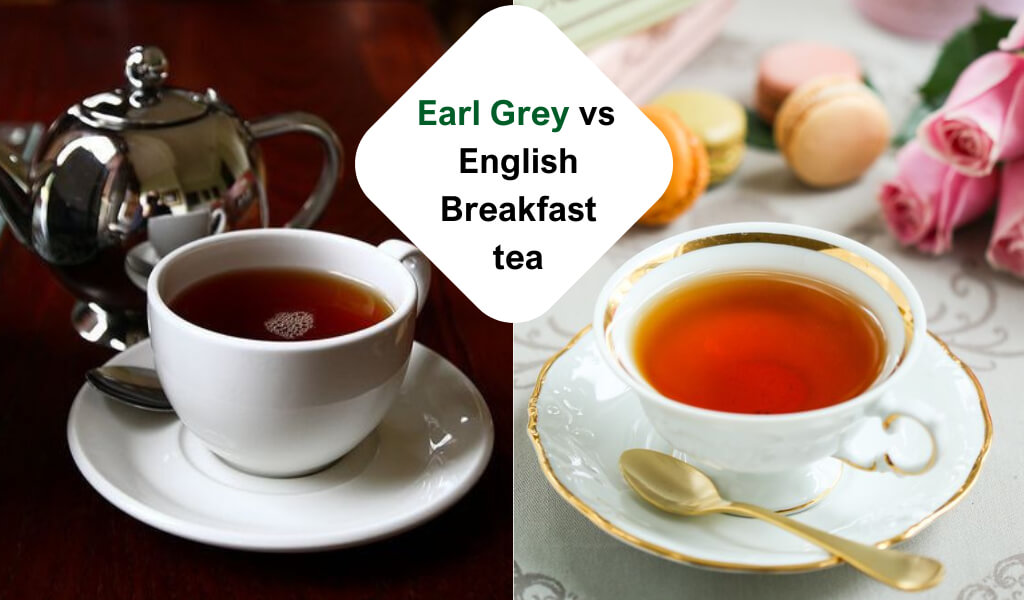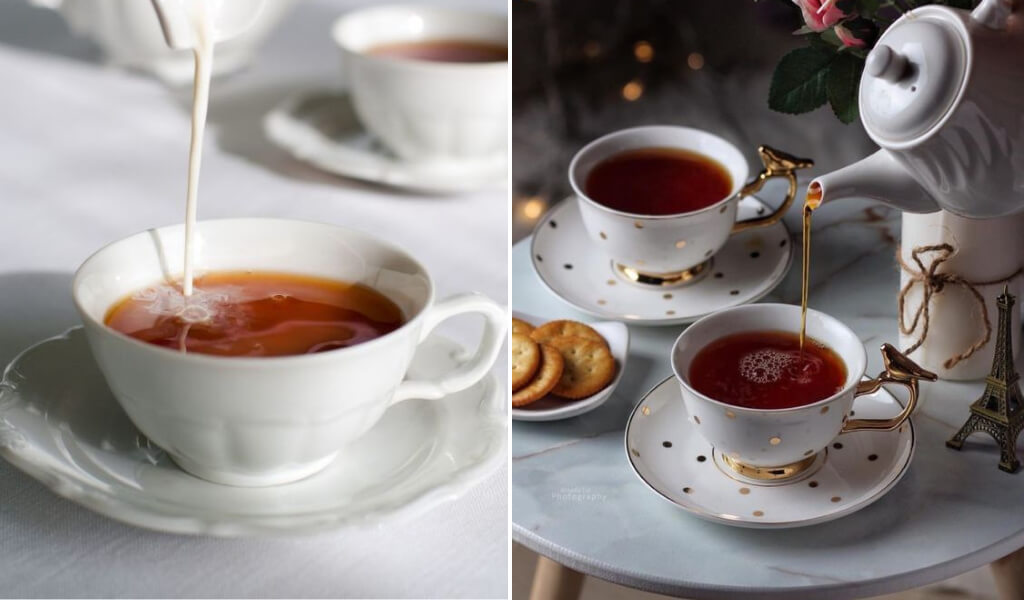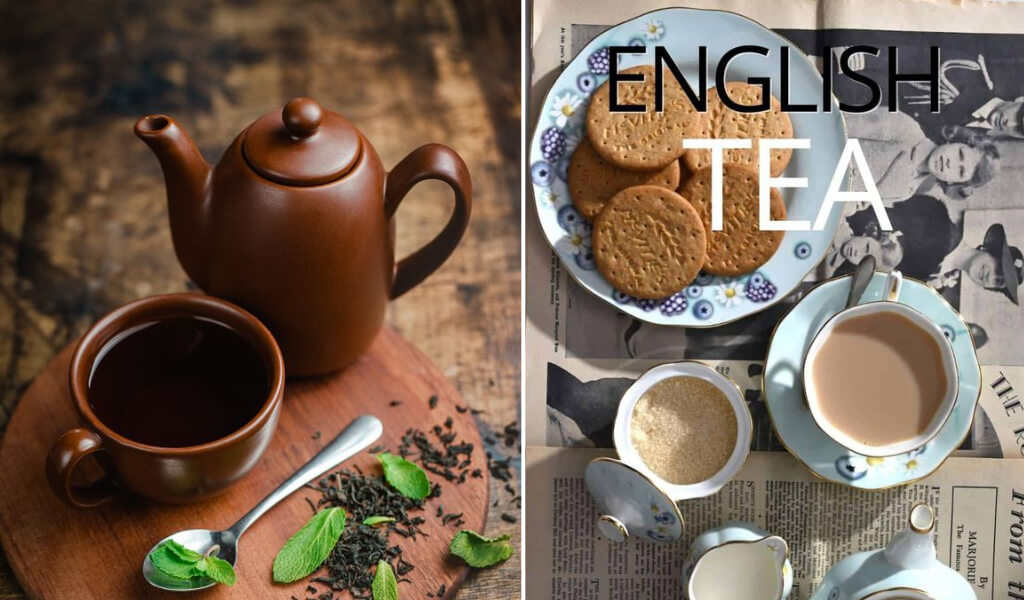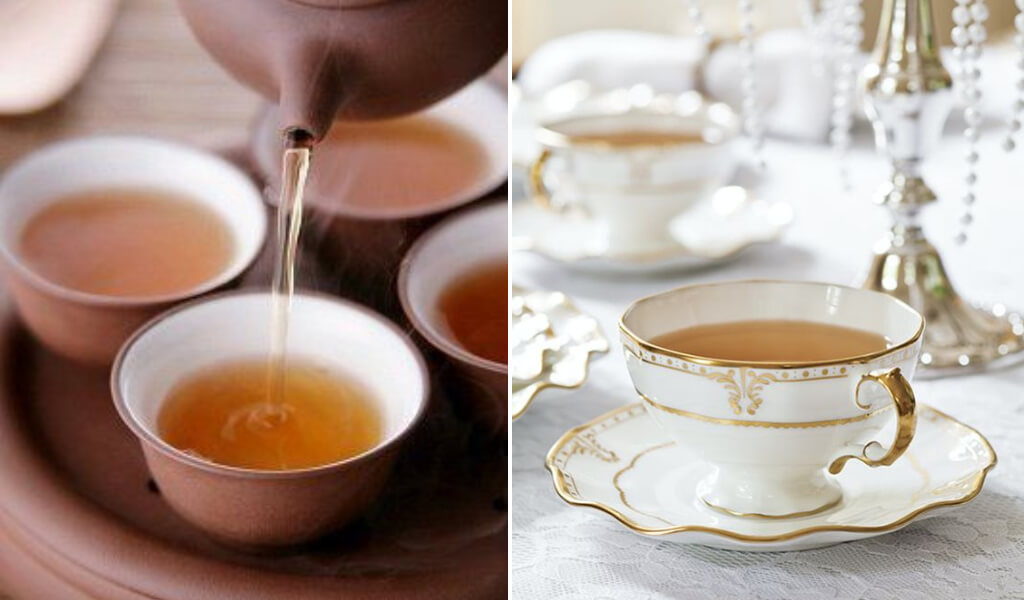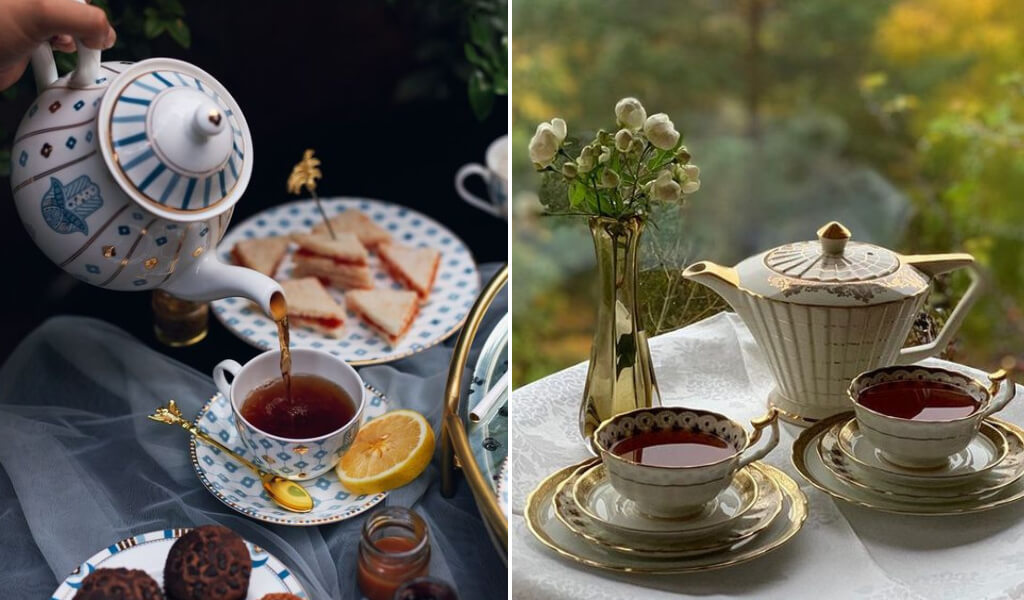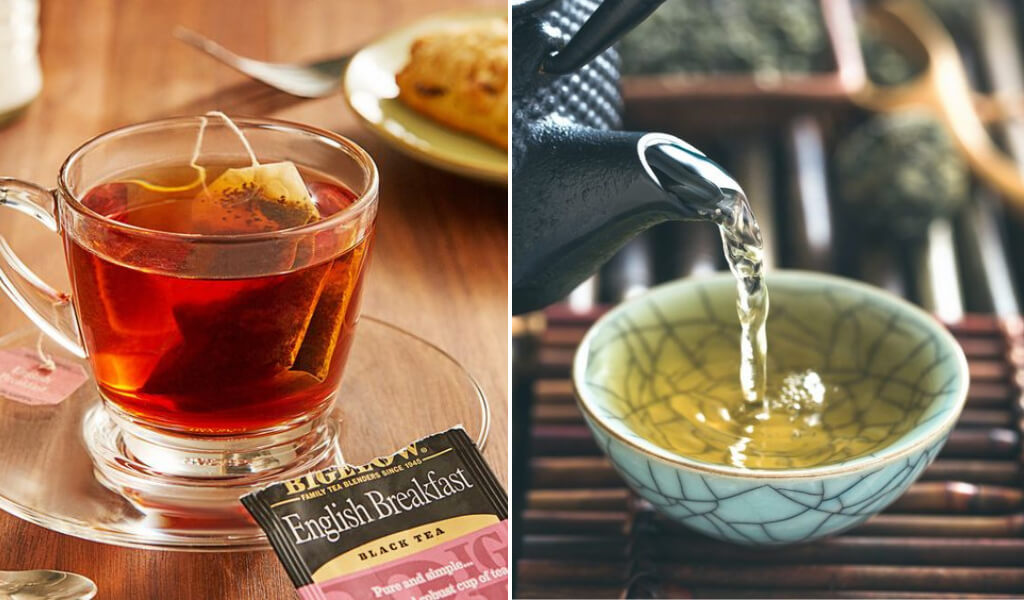Earl Gray and English Breakfast teas are more similar than you might think. Both hail from the same plant, Camellia sinensis, and each has a robust flavor that can kick-start your day or soothe your afternoon.
Here’s a brief comparison table for Earl Grey and English Breakfast teas:
| Feature | Earl Grey | English Breakfast |
| Origin | China | Assam, Ceylon, and Kenya |
| Flavor | Citrusy, lighter due to the addition of bergamot oil | Robust, hearty, and strong |
| Variants | Lady Grey, Russian Earl Grey, Rooibos Earl Grey, French Earl Grey | Scottish Breakfast Tea, Irish Breakfast Tea |
| Caffeine Content | Approximately 55mg per 8 fl oz cup |
Approximately 40-70mg per 8 fl oz cup (varies based on blend and brewing method)
|
| Health Benefits | Stress relief, oral health, potential weight loss, and possible cancer prevention |
Antioxidant-rich supports gut health, improves focus and alertness, potentially lowers cholesterol and reduces risk of cancer
|
| Best Time to Drink | Anytime, but particularly enjoyable in the afternoon |
Traditionally consumed during breakfast due to its robust flavor
|
Earl grey vs English breakfast flavor
English Breakfast boasts a robust, strong, and dark flavor, while Earl Gray offers a milder, smoother, and citrusy taste. This contrast in their flavor profiles is the primary distinction between the two.
However, it’s important to remember that with its robustness, English Breakfast tea can also present a surprisingly wide flavor range, underlining its rich blending history.
Earl Grey’s unique flavor is derived from bergamot oil, extracted from edible bergamot oranges, giving it a distinct citrus aroma and taste that distinguishes it from other teas. For a stronger tea experience, consider Irish Breakfast or the even more robust Scottish Breakfast teas, if you prefer a bolder kick than English Breakfast.
English Breakfast vs Earl Gray Benefits
While both teas are beneficial, English Breakfast primarily supports gut health and glucose regulation, whereas Earl Gray helps combat stress and supports oral health.
Despite containing zero calories, fat, cholesterol, carbohydrates, and protein, English Breakfast tea is rich in antioxidants. These antioxidants prevent cell damage, reducing the risk of heart stroke, diabetes, and cancer.
It promotes gut health, closely tied to overall mental and physical well-being. L-theanine, an amino acid in the tea, enhances focus and alertness. Additionally, its components, theaflavin and thearubigins, aid in lowering cholesterol levels, and the polyphenols in the beverage can potentially reduce the risk of cancer.
On the other hand, Earl Gray tea is known for the curative quality of bergamot, which can alleviate stress, anxiety, and depression. Its antioxidant catechins help fight oral infections, strengthening teeth and gums. The caffeine content in Earl Grey provides an energy boost, making it a great morning beverage.
Bergamot’s citrus nature aids in calorie breakdown, contributing to weight loss. Lastly, like English Breakfast, Earl Grey helps reduce the risk of diseases like cancer. The caffeine content is moderate, making it ideal for those seeking the health benefits of caffeine without overdoing it.
Read More:
- English Breakfast Vs Black Tea Comparison: Interesting fact
- Irish breakfast vs English breakfast tea comparison: Interesting fact
- Bold and Rich: Exploring Black English Tea Varieties
English Breakfast Vs Earl Grey Caffeine
English Breakfast tea generally has more caffeine, with a range of 40mg to 70mg per 8 fl oz cup, compared to Earl Gray, which contains around 55 mg per 8 fl oz cup.
Both black teas exact caffeine content can vary based on the blend and brewing method. Typically, black teas have higher caffeine levels than green or white teas.
Earl Gray vs English Breakfast History
In 1892, the Scottish merchant Robert Drysdale crafted English Breakfast tea, a blend meant to complement hearty breakfasts. On the other hand, Earl Grey tea, linked to British Prime Minister Charles Grey, has a more uncertain origin with connections to China.
English Tea, created by Scottish merchant Robert Drysdale in 1892 as a perfect companion to a hearty English breakfast, is celebrated in British homes to this day. Earl Grey tea, however, has a more mysterious history, with its first black tea from China and ties to British Prime Minister Lord Charles Grey in the early 19th century. Some claim that Jacksons of Piccadilly, a London tea house, crafted this tea for Lord Grey.
Another story suggests Lord Grey received the tea as a diplomatic gift and asked a merchant to replicate it. Some sources even suggest that bergamot oil was initially used to enhance the flavor of lower-quality tea, marking an earlier existence of this special blend.
Definition
Earl Grey tea is a blend flavored with oil from the bergamot fruit. This fragrant oil is added to black tea, giving Earl Grey a distinctive taste.
Traditionally, the black teas used were Chinese Keemun, served without milk1. Conversely, English Breakfast tea is a traditional blend of black teas from Assam, Ceylon, and Kenya. It is a staple of British and Irish tea culture and is commonly consumed during breakfast, hence its name.
English breakfast tea vs earl grey Variants
Earl Grey tea has five major variants: traditional Earl Grey, Lady Grey, Russian Earl Grey, Rooibos Earl Grey, and French Earl Grey. Each variant offers a unique twist on the classic Earl Grey, from Russian Earl Grey’s citrusy note to Rooibos Earl Grey’s cranberry-like sweetness.
On the other hand, English Breakfast tea has two main subtypes: Scottish Breakfast Tea and Irish Breakfast Tea. These variants primarily differ in aroma and flavor strength, with the Irish Breakfast Tea being the most robust of the three, including the original English Breakfast.
Difference between earl grey and English breakfast: Type of Tea
Both Earl Grey and English Breakfast teas are types of black tea, each with its unique blend and flavor profiles.
Earl Grey is known for its distinctive citrusy flavor from the bergamot oil, while English
Breakfast is cherished for its robust and hearty taste, which pairs well with breakfast foods. While the base of both teas is black tea, the addition of flavorings and the blend of teas used to give each its unique characteristics
In Conclusion: Which is better?
I’ve walked you through the unique flavors, history, and benefits of each. With its citrusy bergamot notes, Earl Grey is a refreshing choice, while English Breakfast, with its robust flavor, provides a hearty start to the day.
Whether in England, Ireland, or Scotland, these teas are now essential to our tea culture, bridging breakfast and afternoon rituals. Comparing Earl Grey and English Breakfast has piqued curiosity for new flavors.
Thank you for joining me on this journey, and if you’ve found this helpful, feel free to share it with your fellow tea enthusiasts. Cheers!
I’m Shanna, creator of Spiritea Drinks. I’m all about teaching people to grow their own food, tea, cook what they harvest, and eat with the seasons.

